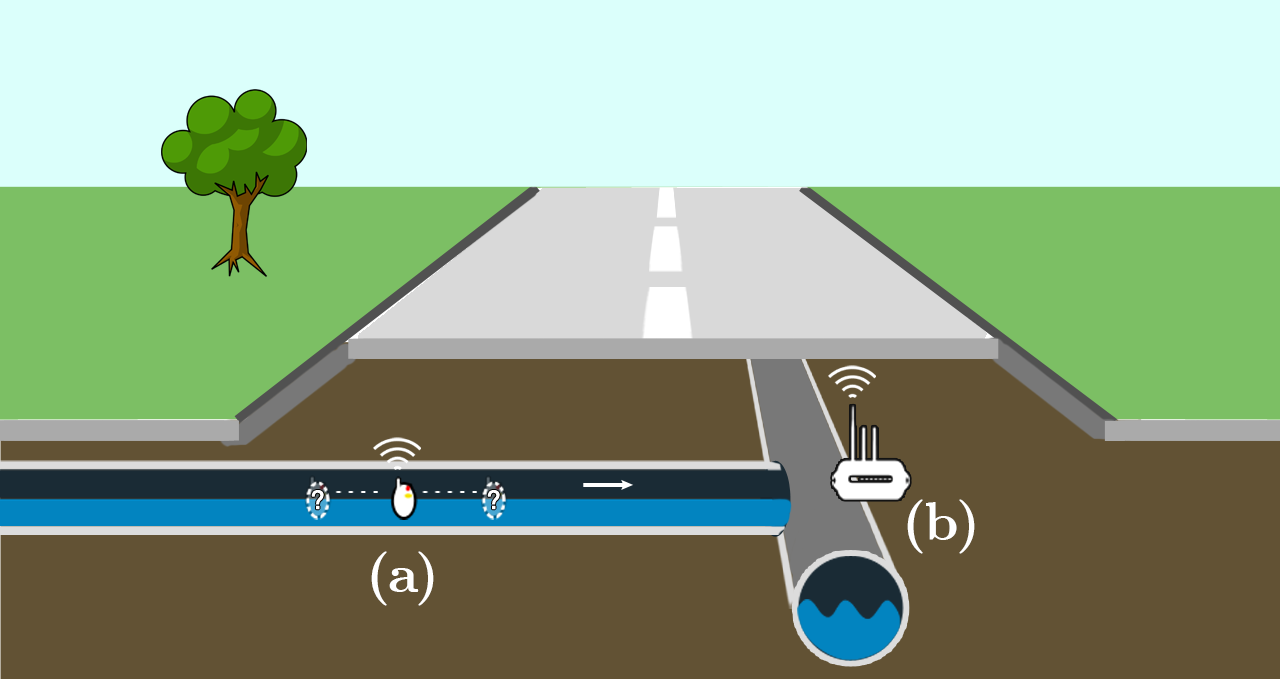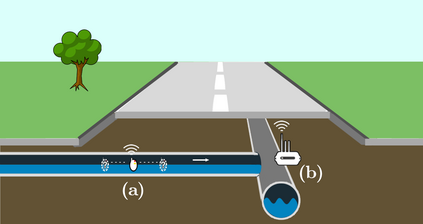Mobile wireless sensors are increasingly recognized as a valuable tool for monitoring critical infrastructures. An important use case is the discovery of leaks and inflows in pipe networks using a swarm of floating sensor nodes. While passively drifting along, the devices must track their individual positions so critical points can later be located. Since pipelines are often situated in inaccessible places, large portions of the network can be shielded from radio and satellite signals, rendering conventional positioning systems ineffective. In this paper, we propose a novel algorithm for assigning location estimates to recorded measurements once the sensor node leaves the inaccessible area and transmits them via a gateway. The solution is range-free and makes use of a priori information about the target pipeline network. We further describe two extended variants of our algorithm which use data of encounters with other sensor nodes to improve accuracy. Finally, we evaluate all variants with respect to various network topologies and different numbers of mobile nodes in a simulation. The results show that our algorithm localizes measurements with an average accuracy between 4.81% and 7.58%, depending on the variability of flow speed and the sparsity of reference points.
翻译:移动无线传感器日益被公认为是监测关键基础设施的宝贵工具。 一个重要的用途案例是利用浮动传感器节点群群发现管道网络的漏泄和流入。 设备在被动地漂移的同时,必须跟踪各自的位置, 以便日后能够定位关键点。 由于管道往往位于无法进入的地方, 网络的很大一部分可以被保护在无线电和卫星信号之外, 使常规定位系统失效。 在本文中, 我们提出了一个新的算法, 用于在传感器节点离开无法进入的区域并通过网关传输时, 将位置估计数指定为记录测量数据。 解决方案没有范围, 并使用目标管道网络的事先信息。 我们进一步描述了我们算法的两种扩大变式, 使用与其他传感器节点的相遇数据来提高准确性。 最后, 我们评估了各种网络结构的变式, 以及模拟中不同的移动节点数目。 结果表明, 我们的算法根据流动速度的变异性和参照点的松散性, 将平均精确度在4. 81%和7.58 %之间。







